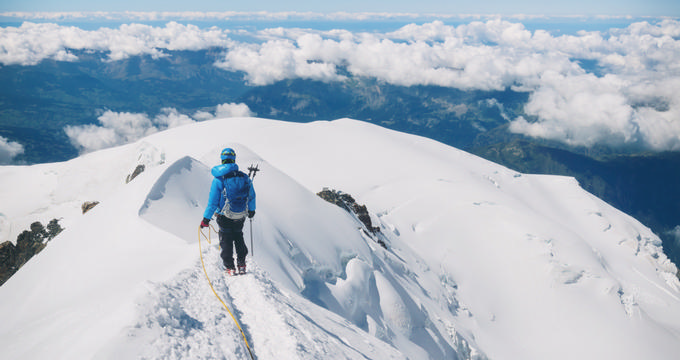Explore the elevation of Mont Blanc—towering above the Alps as the highest peak in Western Europe, straddling France and Italy, cloaked in snow year-round, and drawing adventurers, climbers, and dreamers to its majestic, glacial slopes.
Table of Contents
- Where is Mont Blanc?
- Mont Blanc Profile
- Elevation Basics
- Must-Know Elevation Facts
- Climate and Tourism
Where is Mont Blanc?
- Location: Mont Blanc is located in the Alps, straddling the border between France and Italy.
- Nearby towns: Chamonix and Saint-Gervais-les-Bains in France; Courmayeur in Italy.
- Name meaning: Known as Mont Blanc in French and Monte Bianco in Italian, both meaning “White Mountain.”
Mont Blanc Profile
- Elevation: Mont Blanc rises to 15,777 feet (4,808.7 m).
- Prominence: Measures 15,407 feet (4,696 m), making it the 11th most prominent peak in the world.
- Historic ascent: First climbed in August 1786.
- Olympic history: Featured in the first Winter Olympics in 1924 held in Chamonix.
- Climbing danger: Over 100 deaths occur annually in the massif, making it one of the most lethal peaks.
- Tourist appeal: Attracts both sightseers and climbers; activities include skiing, hiking, and mountaineering.
Elevation Basics
- Measurement: Elevation indicates a location’s height above mean sea level and can change due to erosion or seismic activity.
- Difference from prominence: Elevation is the summit’s height; prominence is how much it rises above the surrounding terrain.
- Key huts along routes:
- Refuge Vallot: 14,311 feet (4,362 m)
- Cosmiques Hut: 11,854 feet (3,613 m)
- Tête Rousse Hut: 10,390 feet (3,167 m)
- Grands Mulets Refuge: 10,007 feet (3,050 m)
- Official elevation changes: Once listed as 15,771 feet (4,807 m), newer measurements now confirm 15,777 feet (4,808.4 m).
Must-Know Elevation Facts
- Countries: Mont Blanc is shared between France and Italy.
- Average elevations:
- France: 1,230 feet (375 m)
- Italy: 1,765 feet (538 m)
- Second highest peaks:
- Italy: Grenzgipfel – 15,151 feet (4,618 m)
- France: Barre des Écrins – 13,458 feet (4,102 m)
Climate and Tourism
- Climate: Cold and temperate alpine climate with year-round snow.
- Snowfall: Areas like Chamonix and Courmayeur receive over 250 inches (635 cm) of snow annually.
- Climbing challenges: The mountain poses significant risks with frequent rescues and extreme weather.
- Accommodations for climbers: Several refuges and huts provide rest stops during ascents.
- Tourism volume: Over six million visitors explore the Mont Blanc Massif each year.
- Alternative experience: The Aiguille du Midi Cable Car offers scenic access to 12,605 feet (3,842 m) for breathtaking panoramic views without climbing.
Plan Your Trip


